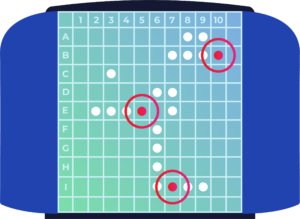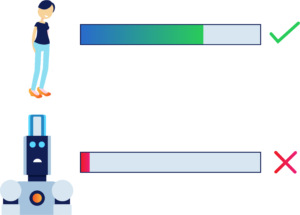With the upcoming transformation of Apple’s IDFA to an opt-in basis, it’s becoming more important than ever to choose your mobile programmatic partners with care. Separate considerations need to be made then depending on whether your user acquisition campaigns are focused on iOS or Android. These considerations, along with the anti-fraud technology, transparency, machine learning capabilities, and account management of your prospective programmatic partners, should be key factors in your selection process.

Let’s start with audience and user targeting for user acquisition.
User Acquisition: Targeting
For iOS, this is about to change dramatically. As over 80% of iOS users will be expected to refuse permission for their deviceID to be used for advertising purposes, the amount of user-level data passed back to programmatic channels is likely to reduce greatly come the launch of iOS14 in September. There will still be an enormous amount of value to be derived through programmatic channels for iOS user acquisition campaigns, but strategies involving locational targeting and creative development against site-level assumptions will become imperative.

For locational targeting, a strong programmatic partner will be able to target with two methods: list and map. The first method is simple – the advertiser provides a list of desirable or undesirable zip codes, and the programmatic partner whitelisting or blacklisting as appropriate. The second method, involving a map, called geo-fencing, uses key zip codes as points to create locational areas wherein devices can be optimised against and campaigns crumbled accordingly; much like user-segment targeting, but applying locational demographic assumptions against the geo-fenced area.

For creative development, it is vital that your partner can apply unique, iterative creative development methodologies at a site-level to cater to the user demographics of the particular site and boost engagement rates. The key word is “iterative” – the strongest programmatic partners will maintain a team of specialists who can create dozens, sometimes hundreds, of variations on a single creative in order to A/B test creative and pinpoint value. Better yet, work with a programmatic partner specialising in interactive or playable ads, which are known to garner high engagement rates at the click, conversion and post-install event markers.

In a post-IDFA landscape and beyond, if you’re considering a mobile programmatic partner who can’t capture and apply locational targeting via zip codes, or who is not implementing an iterative and demographically-targeted creative strategy to drive site-level performance, you are not maximizing value. Site and location-agnostic approaches are no longer a viable strategy for iOS.

For Android devices, device-level data is still incredibly important. Make sure your mobile programmatic partner can break down and understand the audience segments necessary to target your campaign against, and who can subsequently identify trends and manage your campaign data effectively. This means applying machine learning. Unbiased algorithms help effective partners manage and translate huge sums of user-level data into actionable learnings, crumbling campaigns which target progressively granular user-segments and site-lists with unique bidding and creative strategies to drive the most value.
Anti-fraud
Aside from campaign targeting, which considerations are significant? Anti-fraud is a big one. You’ll want to work with a partner who has strong anti-fraud partner integrations and who can provide dynamic reporting on your campaign data to identify where issues of potential fraud have occurred so that they can be objectively understood and rectified. However, focus should additionally be payed to how fraud can be prevented at the site and user level.

A partner with anti-fraud capabilities built in to the creatives they serve is possible with today’s technology. At Kaden, we have pixels within our playable creatives that fire as the user progresses in their interaction. Essentially, we can tell from creative-level engagement data whether there is a real user interacting with your ad, and the pseudo-arbitrary progression paths within playable make them extremely difficult for a fraudsters to beat – much like the ‘captcha’ mechanic utilised by many websites. This makes our ads fraud-resistant, which will be especially desirable for iOS given programmatic channels will no longer be able to blacklist iOS users effectively at a device level.
Transparency
To further understand and take action against fraud, you’ll want to work with partners who provide 100% transparency into your campaign data. The best partners offer no less. This means for Android devices that they actively provide access to data down to the device level, including the site, impression and creative understandings along the way. Also important is signal clarity, to help with attribution and matching install to click to impression.
Be concerned if a partner is unwilling to provide you with data driven by your campaigns. It is important then to work with partners who provide a reporting dashboard. This will help you quickly and effectively measure the success of your campaigns, whether they are iOS or Android focused. With the combination of campaign transparency and a reporting dashboard, you should have all the tools you need to control your advertising.

Customer Service
You’ll still want to work with an account manager who knows what to do though. That’s right – customer service is an important part of choosing a programmatic partner. Some partners provide more hands-off campaign management, others will offer detailed insight into the performance of your creative and the crumbling of your campaigns. It is beneficial to work with an account manager who really knows the way around data and their platform technology. At Kaden, we believe that this is key and our team of account managers is comprised strictly with data specialists. They aren’t called “Account Data Managers” for nothing.
Final Thoughts

The concern advertisers have about the future of their mobile campaigns post-IDFA is understandable. Especially if you’re considering running iOS user acquisition campaigns from Q3 2020 onward. Ultimately, you should be looking for a partner who can extrapolate learnings from a macro-campaign. Who can fragment it down aggressively into sub-campaigns with a variety of targeting options applied, using machine learning whenever possible to speed up the process. Work with partners who strive to improve assumption accuracy, who run A/B tests against those fragmentations and who provide 100% transparency along the way.
Make sure you test a variety of programmatic partners against the requirements discussed here: locational and creative-based targeting, machine learning, anti-fraud technology, transparency, and customer service. In the post-IDFA era, there is no telling how data management will develop, so focus on what you can control in order to ensure the maximum value from your campaigns.

 Português
Português 韓國
韓國 日本
日本
